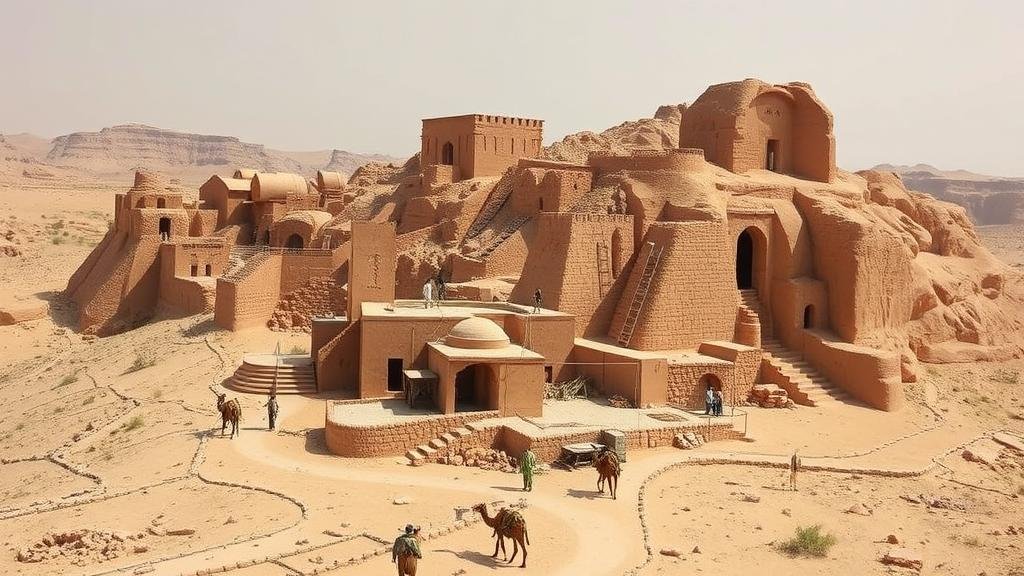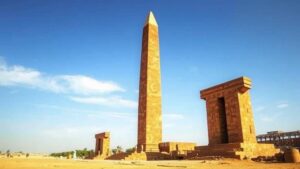Searching for the lost trading hubs of the Nabateans scattered across the Arabian Peninsula.
Searching for the Lost Trading Hubs of the Nabateans Across the Arabian Peninsula
The Nabateans, an ancient Arab people, flourished from around the 4th century BCE until the 2nd century CE, establishing a vast network of trading hubs across the Arabian Peninsula. These trade centers were instrumental in the exchange of goods such as spices, incense, silk, and precious stones. But, many of these hubs have been lost to history, hidden by time and erosion. This article delves into the search for these enigmatic trading posts, exploring their historical significance and modern-day archaeological efforts to rediscover them.
The Nabatean Civilization: A Brief Overview
The Nabateans are best known for their monumental city of Petra, located in present-day Jordan, which served as both a cultural center and a crucial waystation for traders traveling along the Incense Route. They mastered water harvesting and carved elaborate structures into rock, showcasing remarkable engineering skills.
The height of Nabatean power coincided with the flourishing trade networks that connected Arabia to the Mediterranean and beyond. It is estimated that the Nabatean Kingdom controlled crucial trade routes, particularly those that facilitated the movement of incense from Yemen and spices from India.
Identifying the Lost Trading Hubs
Several locations have emerged as potential sites of lost Nabatean trading hubs, each tied to historical accounts and archaeological evidence. e locations help piece together the economic landscape of Nabatean trade.
- Al-Ula, Saudi Arabia: Often linked to the ancient city of Dedan, Al-Ula served as a significant trading post on incense and spice trade routes. Archaeological findings indicate it was inhabited from the 6th century BCE until the 4th century CE.
- Petra, Jordan: While well-known, Petra was not only a political capital but also a major commercial hub that facilitated the trade of goods like frankincense and myrrh.
- Madain Saleh (Al-Hijr), Saudi Arabia: This UNESCO World Heritage site is replete with Nabatean tombs and inscriptions, providing critical insight into the civilizations trading practices and their reliance on water resources.
- Ghadames, Libya: Although primarily Berber, Ghadames shows signs of Nabatean influence, acting as a transit point for trade between Africa and the Middle East.
Archaeological Discoveries and Modern Techniques
Modern archaeology employs various technologies to locate and excavate the lost trading hubs of the Nabateans. Satellite imaging, ground-penetrating radar, and aerial photography have enabled researchers to uncover potential sites buried beneath the shifting sands of the desert.
For example, a 2021 study utilized satellite imagery to identify ancient caravan routes and potential sites previously overlooked. findings suggested that Nabatean traders likely used these routes to circumvent difficult terrain and optimize transit times.
Also, interdisciplinary collaboration among historians, archaeologists, and geologists has provided a more comprehensive understanding of Nabatean trade ecosystems. Combining historical texts with physical evidence allows for a more nuanced view of trading activities across the Arabian Peninsula.
The Role of Tradition and Oral Histories
Also to archaeological evidence, local traditions and oral histories can provide crucial clues about the location of lost trading hubs. Communities in the Arabian Peninsula often recount tales of ancient trade, with locations tied to the Nabateans featuring in their folklore.
For example, the Bedouins of the region have passed down stories about the once-bustling trade caravans that traversed the desert, lending credence to historical accounts of Nabatean commerce. Engaging local communities can reveal forgotten landmarks and insights that modern archaeology might miss.
Implications for Understanding Ancient Trade
The search for the lost trading hubs of the Nabateans has profound implications not only for understanding their civilization but also for examining the complexities of ancient trade networks. By uncovering these sites, historians can gain insights into economic practices, cultural exchanges, and the sociopolitical structures that defined the period.
Conclusion: The Future of Nabatean Studies
The exploration of the lost trading hubs of the Nabateans continues to unveil the intricacies of their remarkable civilization. As archaeological techniques advance and collaboration with local communities increases, more evidence will likely surface, contributing to a richer understanding of the Nabateans and their enduring legacy.
For history enthusiasts and researchers alike, the quest for these ancient trading hubs represents not just a journey through the deserts of the Arabian Peninsula but also a deeper exploration of humanitys shared past and the interconnectedness of ancient cultures.
As interest in the Nabateans grows, fostering awareness and appreciation for archaeological sites is crucial. Engaging in preservation efforts and conducting responsible excavations can help ensure these sites are protected for future generations to study and admire.



